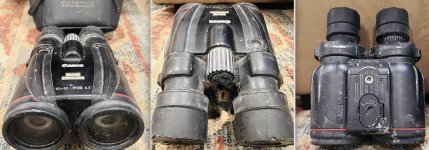42za wrote in another thread, summarizing some of the reservations many people have about Canon IS binoculars:
Now, I don't think the need to carry some spare batteries should keep people from using binoculars that rely on batteries (after all, carrying a spare set isn't that difficult ...

). I also think the risk of "exploding batteries" is negligible in this case, and modern batteries or rechargeables (like the Sanyo Eneloops) don't leak.
But reliability and durability of stabilised binoculars that are by definition more complex than "muggle binoculars" (to borrow Kimmo's term for conventional binoculars) are of course legitimate concerns.
So, what is the reliability and durability of Canon IS binoculars like? And if there are failures - when do they occur? In what conditions? What exactly fails - does the stabiliser fail to work? Or is there - in the case of the cheaper models like the 10x30 - some sort of mechanical failure? Do they fog up?
I'd quite like to know what users' experiences with these binoculars are, both good and bad.
Hermann











